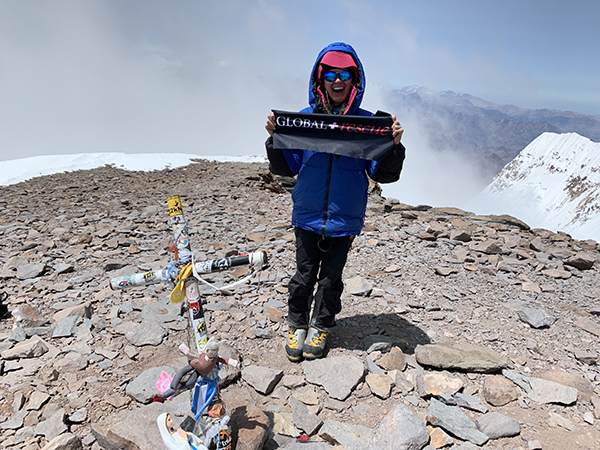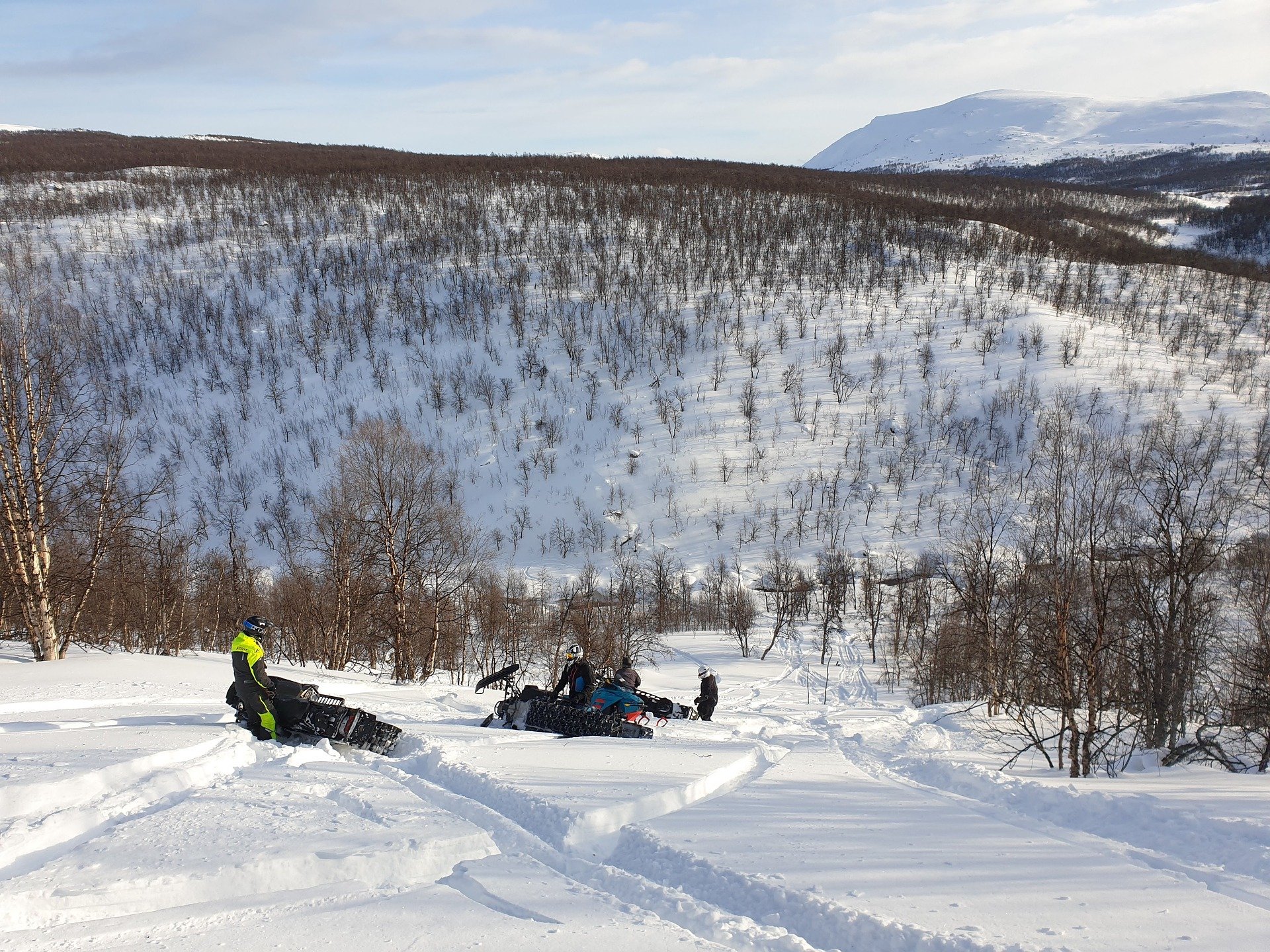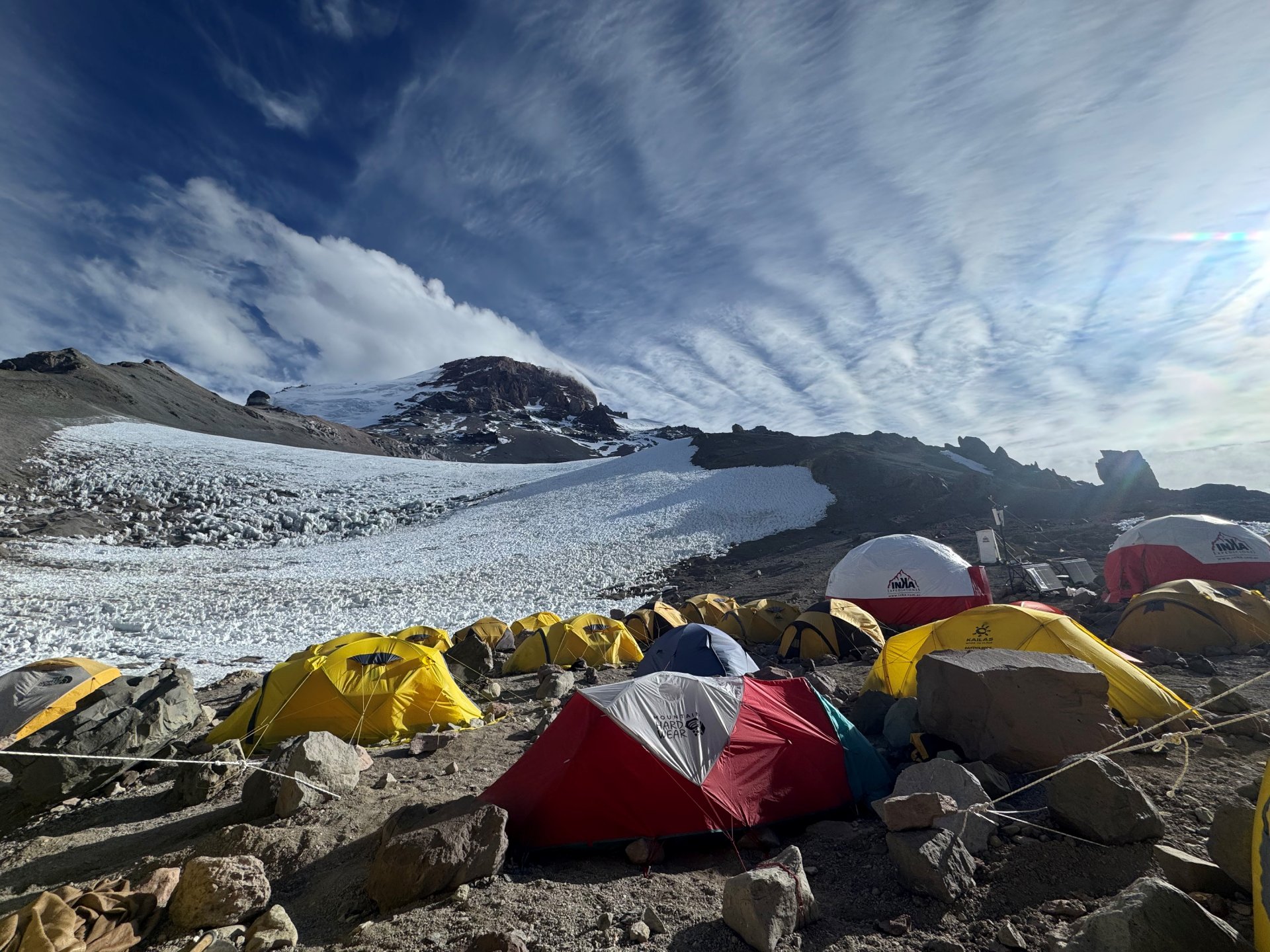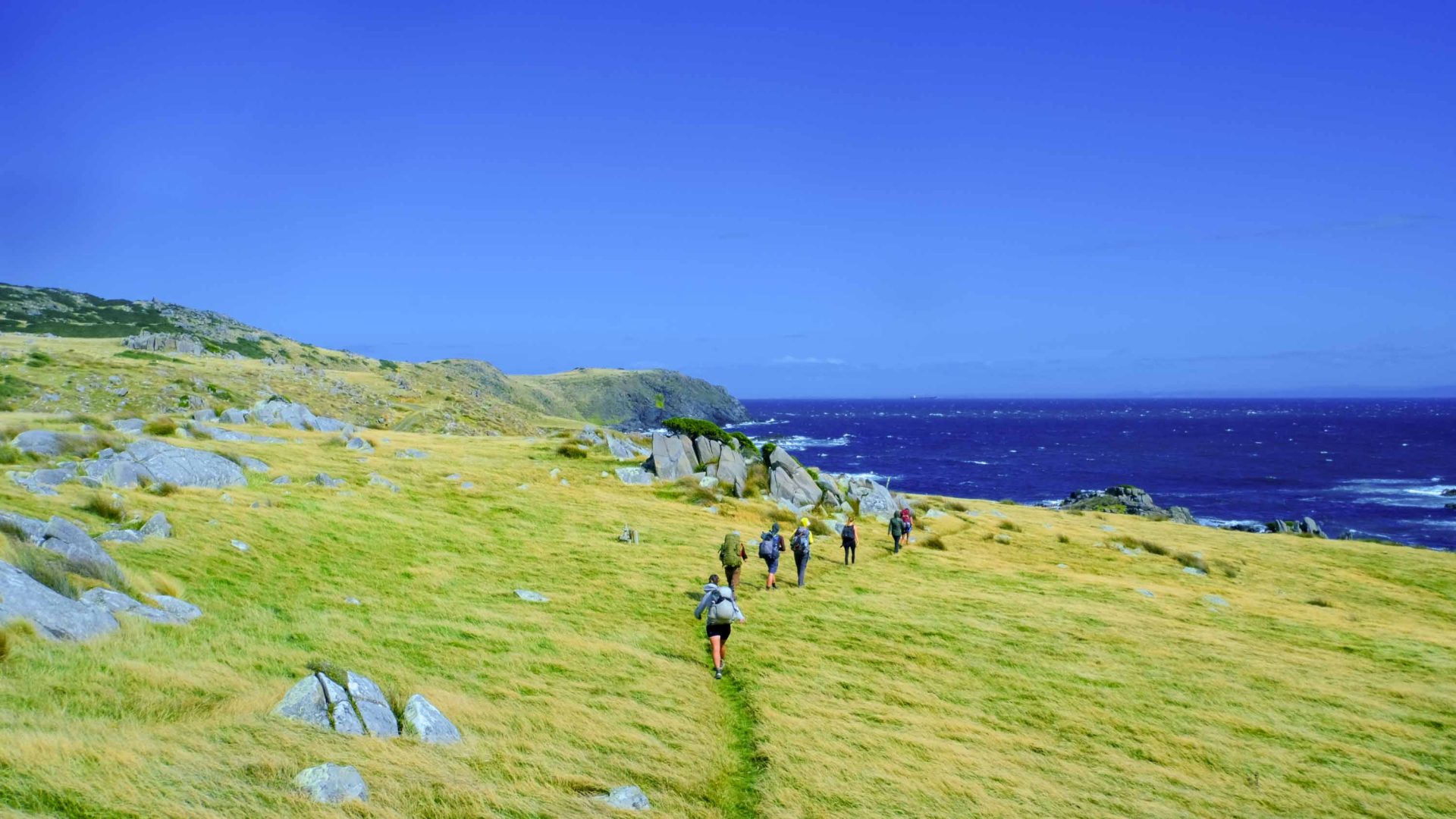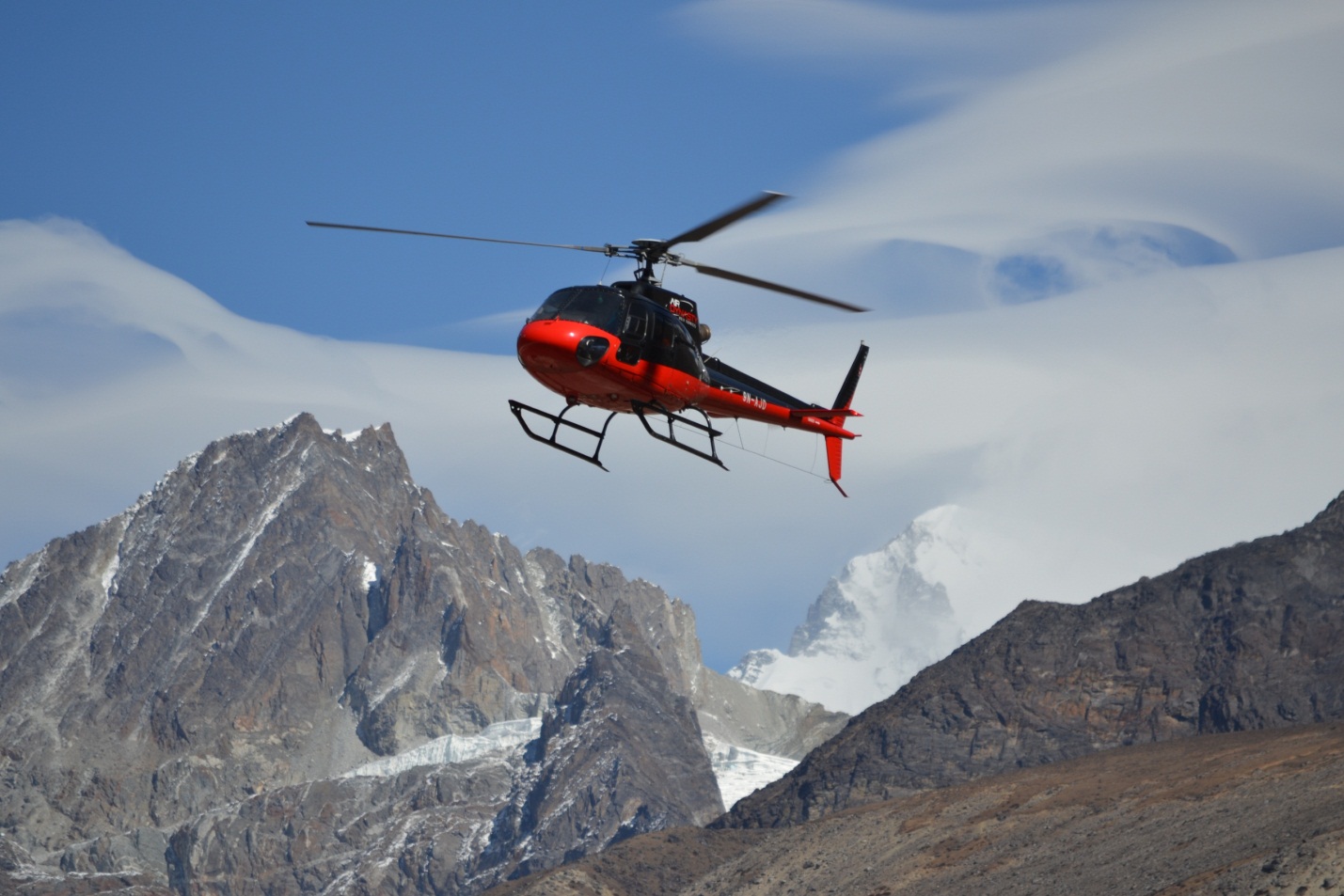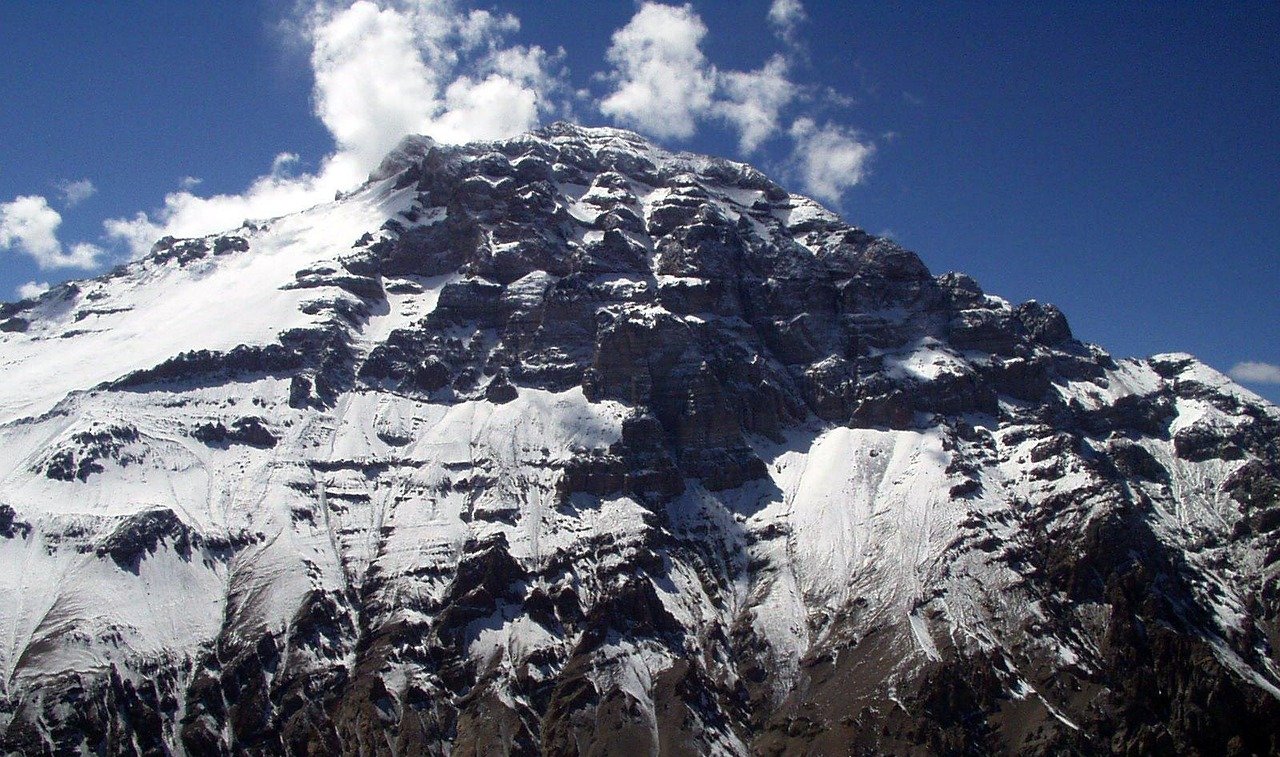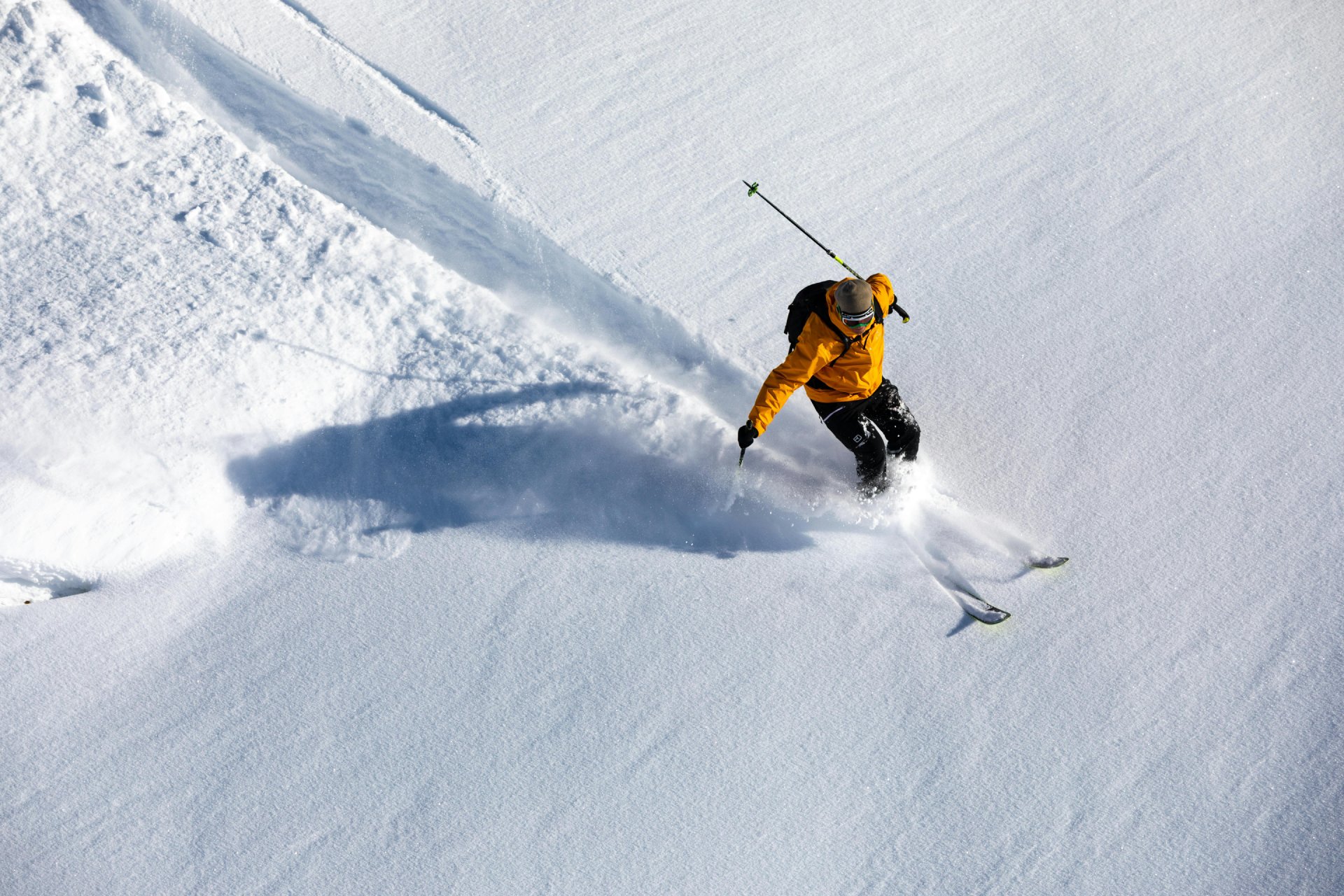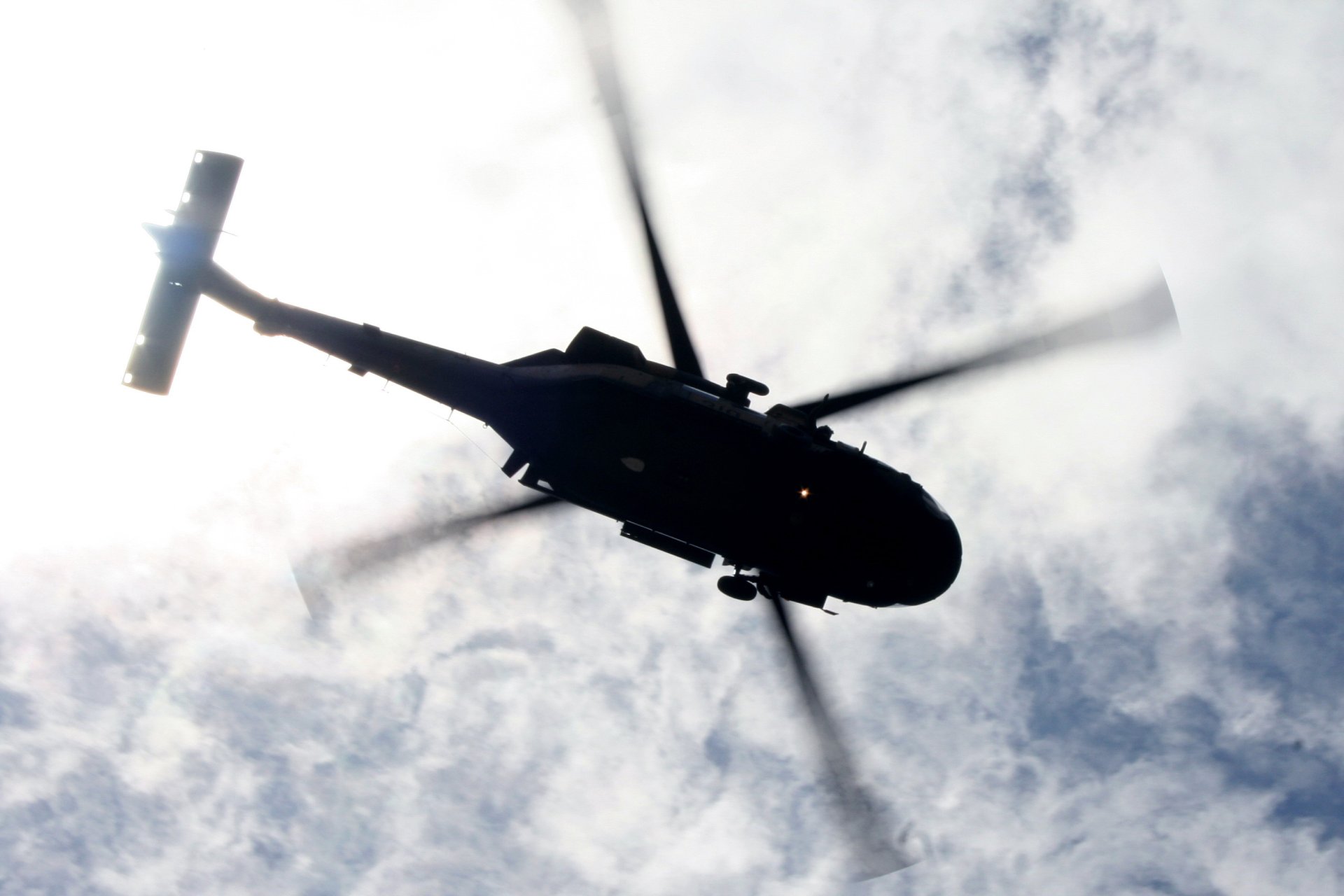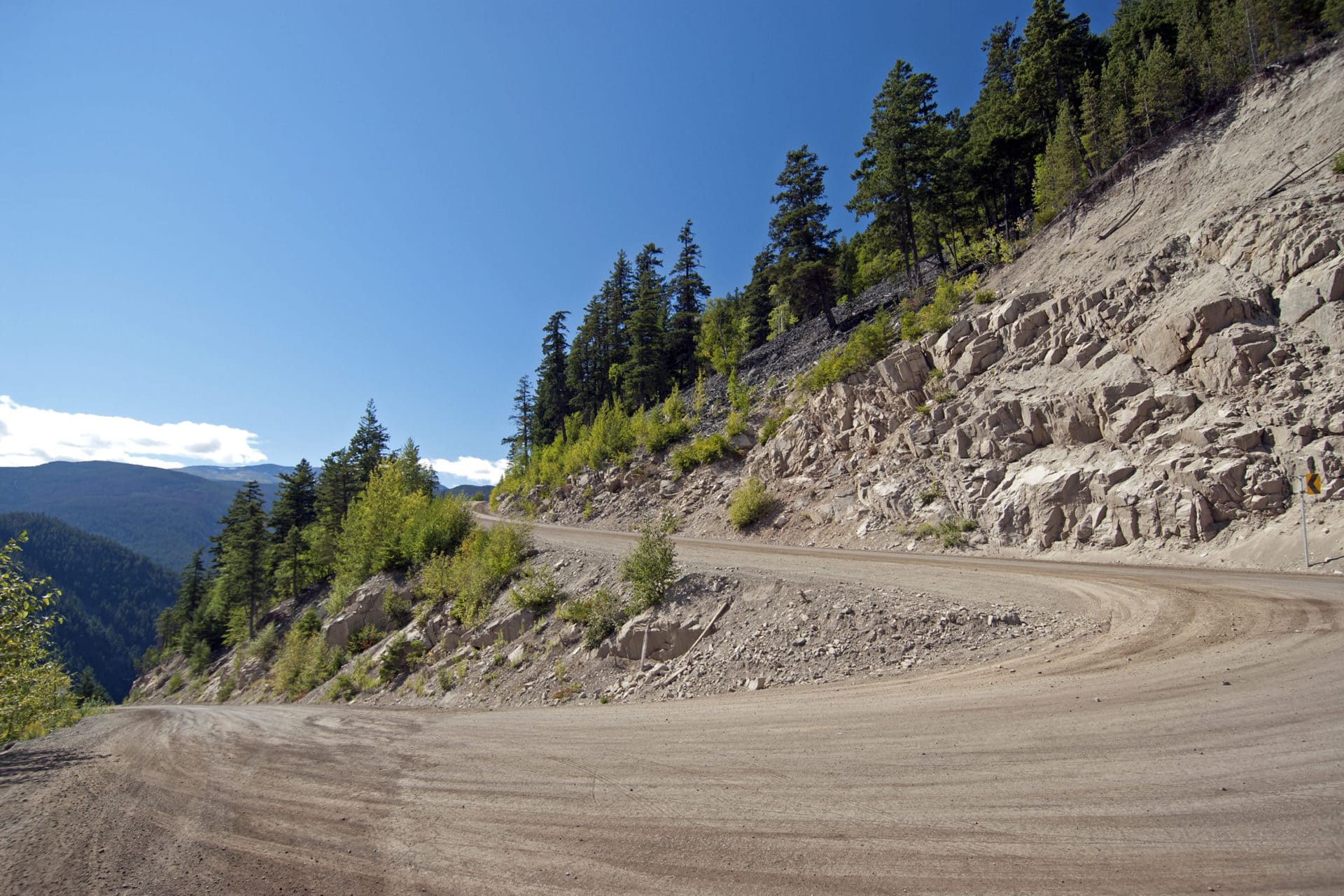Travel writer, military veteran, endurance athlete and chef Amanda Burrill is a lot of things but she was no mountaineer. In fact, the closest she had come to a major summit was looking at a social media photo.
“A friend of mine posted a picture of himself at high camp on Aconcagua. I’d never seen anything like it. I thought, ‘I should get out in the mountains someday.’ I’d never been in the mountains before,” said the former Naval officer. The photo stuck with the runner for more than a decade, through over a dozen more marathons and numerous triathlons.
Then Burrill’s competitive athletic career hit a roadblock. She suffered a traumatic brain injury while in the Navy, and another later on during her recovery. The injuries caused nerve-damage and some loss of motor control in her legs. Running became difficult, and her rehabilitation took on a life of its own.
“I needed to assert myself physically since athletics had been such a big part of my identity as a rescue swimmer, runner, tri-athlete and cyclist,” she said. Hiking became a useful alternative.
It wasn’t long before Burrill decided to take a week and half off from her rehabilitation and challenge herself with a big climb. In 2017, she summited Mount Kilimanjaro (19,341 ft/5,895 m) in Tanzania, a spectacular accomplishment under any circumstance, yet made more meaningful for Burrill who had worked so hard on her balance.
“But,” she admits, “there was more. Seeing the beauty of that mountain and its surroundings made me realize what I’d been missing out on my entire life. It was a magical combination of physical exertion and spiritual fulfillment. I sound like a hippie, and I don’t care.”
Burrill wasted no time summiting Mount Elbrus (18,510 ft/5,642 m) later in 2017, self-guiding Denali (20,310 ft/6,190 m) and a winter Presidential Traverse in 2018, and most recently a solo self-guided climb of Aconcagua (22,841 ft/6,962 m) with plenty of training in the Cascades and Rockies in between. Her adventures are carefully planned and executed, except for one thing. Burrill committed an adventure travel mistake made by many people: She didn’t have travel risk and crisis response services.
“I didn’t have a rescue plan in place,” she said. That all changed for Burrill during an incident above 16,000 feet (4,900 m) on Pico de Orizaba, the highest mountain in Mexico. Bad weather blew in, along with what seemed like extreme symptoms of high-altitude sickness, something Burrill had never experienced.
“I was scared I had HACE (high altitude cerebral edema) given how quickly and badly my health deteriorated. I was delirious thinking, ‘Not my brain!’ We hadn’t ascended too quickly and I’d never had altitude problems in the past,” she said.
Burrill and her partner stayed put, waiting out the weather a day, then descended despite her extreme weakness. Soon thereafter treating doctors discovered Burrill had E. coli, a symptom of which is severe dehydration, which amplified the effects of altitude.
“It took me having an incident – that could have gone horribly wrong – to realize what I’d been neglecting,” she said. “What if I’d needed an evacuation? Never make the same mistake twice.”
Burrill set her mind to correct that oversight. She convinced one of her travel editors to let her write about travel safety, drawing on her Pico de Orizaba ordeal and her upcoming Aconcagua expedition. But first, she needed travel risk and crisis response protection.
Burrill started her investigation.
“I saw that a lot of mountaineers who were talking about their Aconcagua climbs had Global Rescue,” she said.
Then she touched base with her adventure travel friends.
“Global Rescue kept coming up. My research curve wasn’t any steeper than checking with people I trust and respect. That’s how I made my decision,” she said.
Burrill’s Aconcagua ascent included three surprises.
The first was the unexpected lack of snow. “I’ve done all my training in snow. There’s always an abundance of it, so water was never an issue. If I couldn’t melt snow to make drinking water and food, it was going to really mess up the expedition. I almost felt like I was in an alternate universe – it’s so cold and windy, but where’s the damn snow?” she said.
Burrill found and ice-axed her way through to an alternative water source at Camp 2, but it added a couple of days to her ascent.
Her second surprise came a couple hours into summit day when her fingers and toes went numb, a big concern given her peripheral neuropathy.
“I didn’t want to turn back and try again the next day because my intel said this was the best weather option. The sun wasn’t up yet but the sky had started to illuminate. I struggled to loosen up my boots a bit. The feeling crept back into my toes. I did arm swings and got my hands back online,” she said. “All was good, and even though I was about six hours from the summit, I had this feeling – a knowing – that I’d planned everything right, was strong, and was going to make it. This confidence, among the most satisfying feelings I’ve known, felt better than the summit.”
Burrill’s final revelation came during reflective moments after her solo, self-guided adventure.
“I discovered something spiritual being alone in nature and love the feeling of accomplishment associated with doing my best, leaving it all on the battlefield,” she said. Burrill highlights that some of the life plans she made before her injury are no longer in the picture for her future. But she has no regrets.
“If I hadn’t lost so much [from her traumatic brain injuries] then I might not have considered mountaineering as something to seriously pursue. There’s no downside to pivoting toward the things that give you pure joy.”
Indeed.

